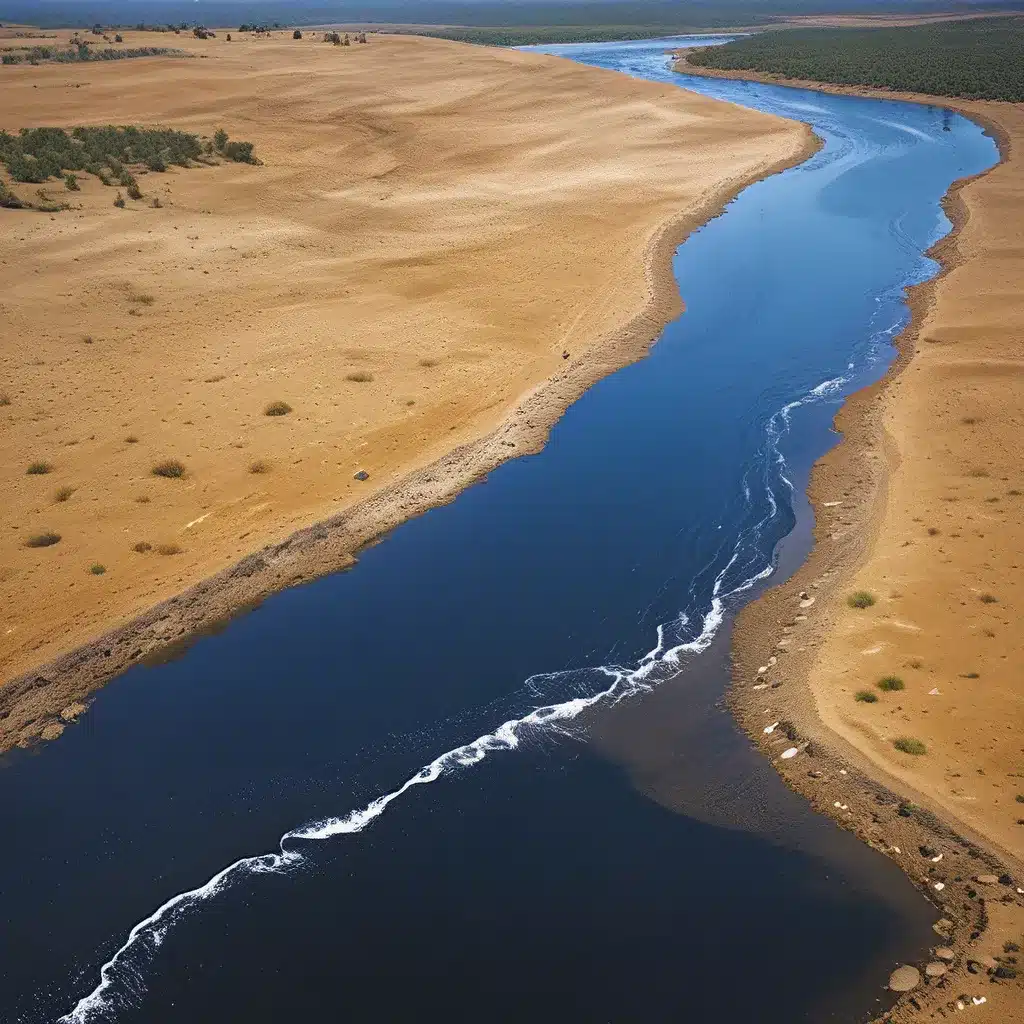
As an environmental enthusiast and someone who’s always been fascinated by the intricate dance of fluids, I’ve often wondered how we can leverage the power of fluid dynamics to build a more sustainable future. And let me tell you, the possibilities are as endless as the ebb and flow of the tides.
Unraveling the Complexities of Water Systems
Now, I know what you’re thinking – water systems? Sounds about as exciting as watching paint dry, right? But bear with me here, because the truth is, these systems are the lifeblood of our communities, and understanding how to optimize them can have a profound impact on our environmental footprint.
Let’s start with the basics. Water systems are complex networks of pipes, pumps, and treatment facilities that work together to deliver clean, safe water to our homes and businesses. And the key to making these systems more sustainable lies in the intricate field of fluid dynamics.
Mustafa Kaddoura, a fluid dynamics expert, explains that “the principles of fluid mechanics are crucial in designing and optimizing water distribution systems. By understanding the behavior of fluids as they flow through the network, we can identify areas for improvement and implement strategic solutions.”
The Power of Computational Fluid Dynamics
But how exactly do we go about optimizing these water systems? This is where computational fluid dynamics (CFD) comes into play. CFD is a powerful tool that allows us to simulate and analyze the behavior of fluids in complex systems. By using advanced mathematical models and computer simulations, we can predict how water will flow through a given network, identify potential bottlenecks or inefficiencies, and develop strategies to optimize the system.
Imagine you’re trying to plan a surprise birthday party for your friend. You’ve got the guest list, the decorations, and the cake – but how do you ensure that everyone can move around the room without bumping into each other? That’s where CFD comes in. By simulating the flow of people through the space, you can identify choke points and adjust the layout accordingly.
Similarly, in the world of water systems, CFD can help us visualize the flow of water through the network, identify areas of high pressure or turbulence, and implement solutions to improve efficiency and reduce energy consumption.
Embracing Sustainable Water Management Practices
But fluid dynamics is just one piece of the puzzle when it comes to building a more sustainable future for our water systems. Sustainable water management practices are also crucial, and they encompass a wide range of strategies, from water conservation and recycling to the use of renewable energy sources in water treatment.
One area that’s particularly exciting is the integration of renewable energy into water infrastructure. Imagine a water treatment plant that’s powered by solar panels or a hydroelectric turbine, reducing its carbon footprint and making it more self-sufficient. These types of innovations are already being implemented in communities around the world, and the results are nothing short of remarkable.
And let’s not forget about water conservation. By implementing smart irrigation systems, upgrading to high-efficiency appliances, and educating the public on the importance of water conservation, we can significantly reduce our water consumption and ensure that our precious resources are used responsibly.
The Future of Fluid Dynamics in Water Systems
As we look towards the future, the possibilities for optimizing water systems through fluid dynamics and sustainable practices are truly endless. Inland Waters Inc., a leading water treatment and environmental services company, is at the forefront of this revolution, constantly exploring new technologies and strategies to improve water infrastructure and reduce environmental impact.
But the journey doesn’t end there. Researchers and innovators around the world are pushing the boundaries of what’s possible, exploring everything from biomimetic water purification systems to the use of artificial intelligence in water management.
And you know what? I can’t help but feel a sense of excitement and wonder as I think about the future of our water systems. It’s like we’re on the cusp of a fluid dynamics revolution, where the ebb and flow of water can be harnessed to create a more sustainable, resilient, and equitable world.
So, my friends, let’s dive in (pun intended) and explore the fascinating world of fluid dynamics and water systems. Who knows what amazing discoveries and innovations await us?


